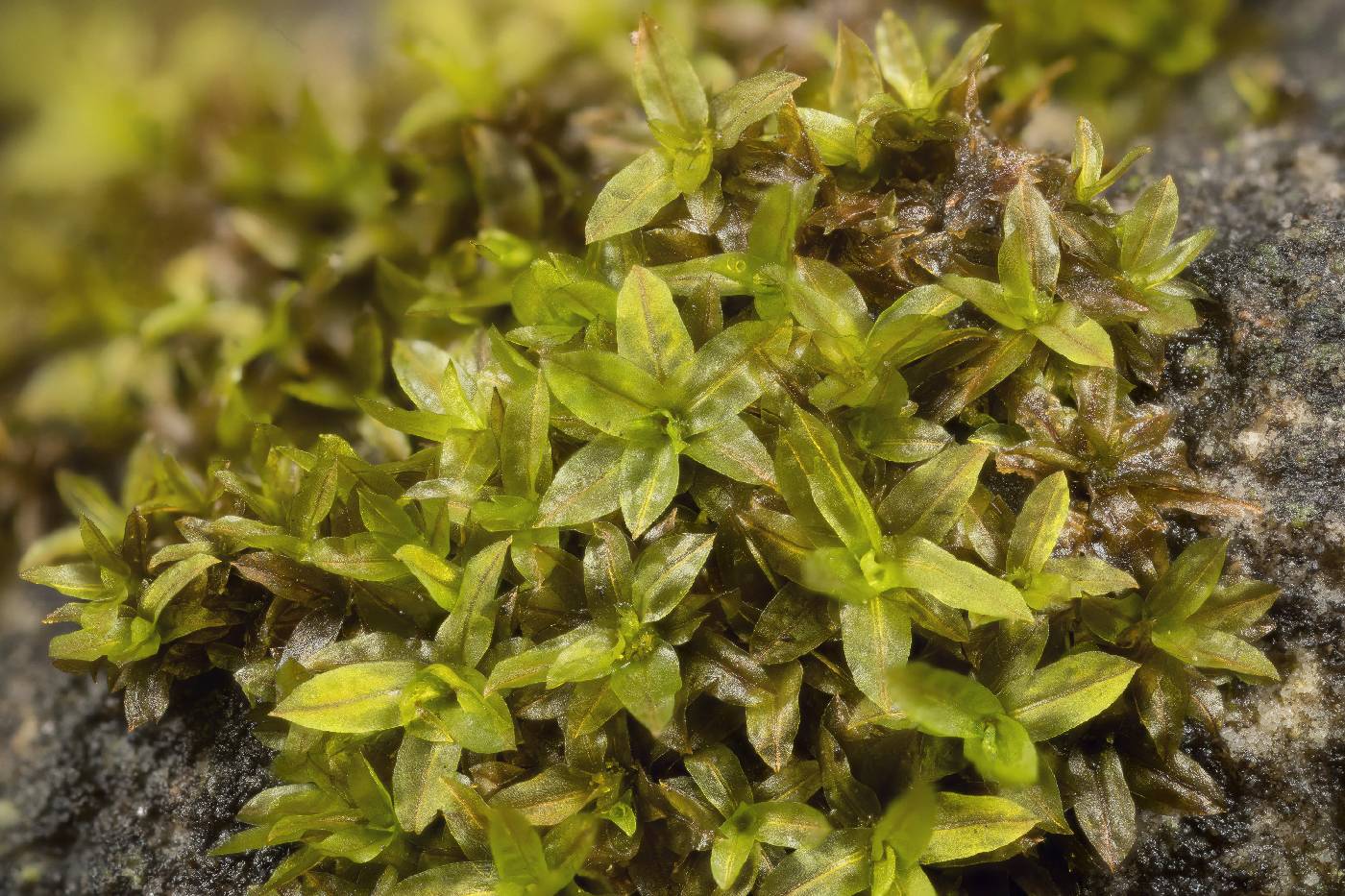
Consortium of Bryophyte Herbaria
- building a Consortium of Bryophytes and Lichens as keystones of cryptobiotic communities -
|
Family: Pottiaceae |
Plants: turf-forming, sometimes loosely cespitose, dull, green distally, red to reddish brown or dark green proximally. Stem: erect, rarely branched, to 1 cm, hyalodermis absent or weakly present and thin-walled, sclerodermis usually present, central cylinder of thick-walled cells, central strand usually strong; radiculose; axillary hairs 6–10 cells long, hyaline. Leaves: tubulose-twisted, incurved, sometimes contorted when dry, spreading when moist, commonly spathulate or ligulate, ovate, oblong-elliptic, usually constricted at the base; distal lamina broadly channeled, occasionally concave, shallowly grooved along the costa; base not different in shape; margins plane to broadly incurved, sometimes narrowly recurved in proximal 2/3, entire or denticulate to dentate in distal 1/4 or at the apex; apex broadly acute to rounded, rarely cucullate or emarginate; costa subpercurrent or percurrent, ending in an apiculus or mucro, adaxial surface cells quadrate to short-rectangular, adaxial and abaxial epidermis present, stereid bands 2, guide cells 4(–6) in one layer; hydroid strand sometimes present; basal cells differentiated across the leaf to only in the median basal region, usually only in a small area near the insertion; distal cells rounded-quadrate to hexagonal, small, walls evenly thickened, bulging equally on both sides or bulging adaxially and plane abaxially, papillae absent or simple. : Specialized asexual reproduction by axillary gemmae, these clavate, stellate or dentate-elliptic in the leaf axils on densely-branched stalks. Sexual: condition dioicous or monoicous; perigonia terminal on perigoniate plants or as lateral buds on perichaetiate plants; perichaetia terminal, perichaetial leaves similar to or smaller than cauline leaves. Seta: elongate. Capsule: long-ovoid to cylindric, operculum conic to long-conic or rostrate, peristome teeth absent. Calyptra: cucullate. Spores: 7–10 µm, papillose. Worldwide in temperate and tropical areas. Species 85 (1 in the flora). |
Powered by Symbiota.





